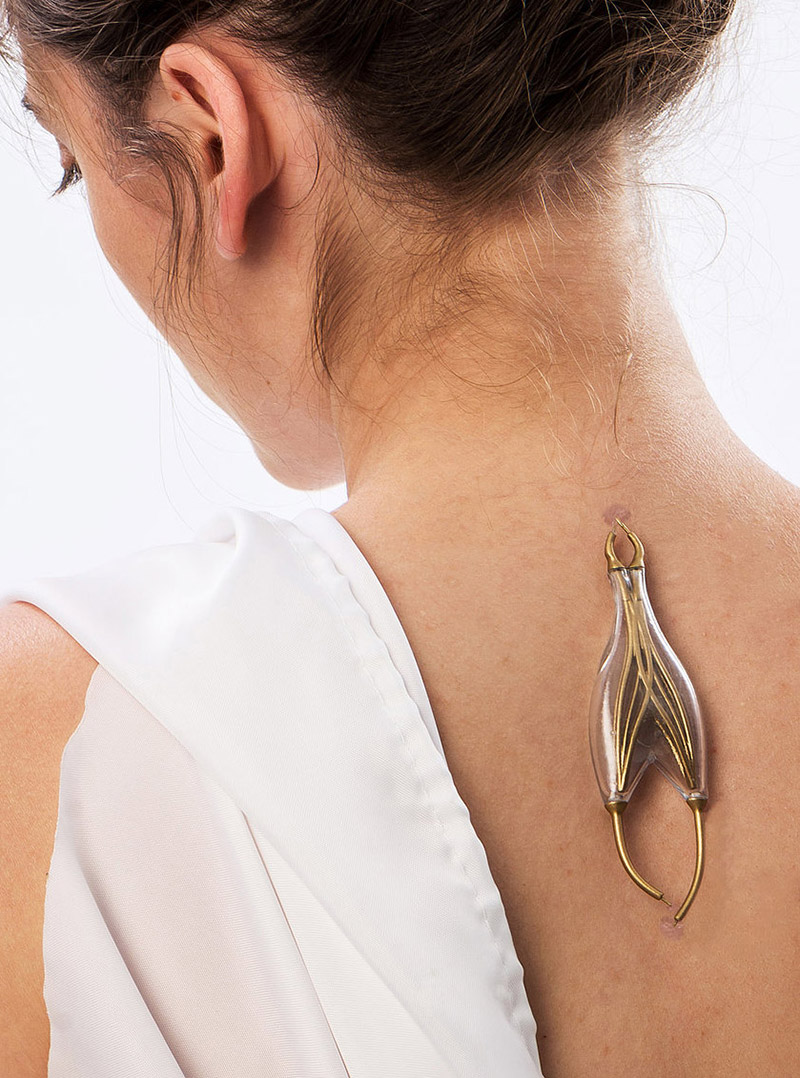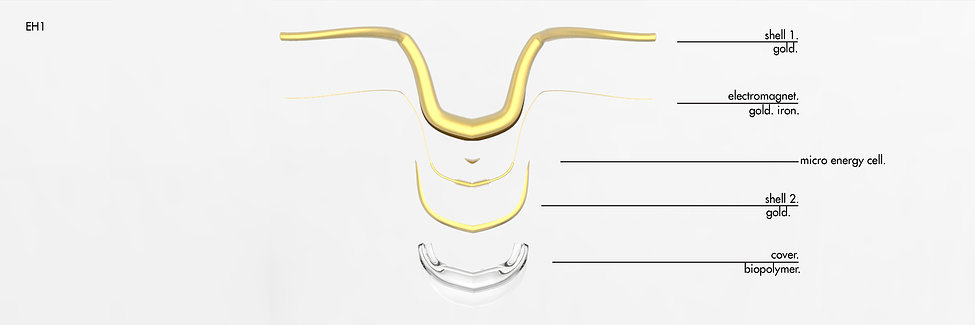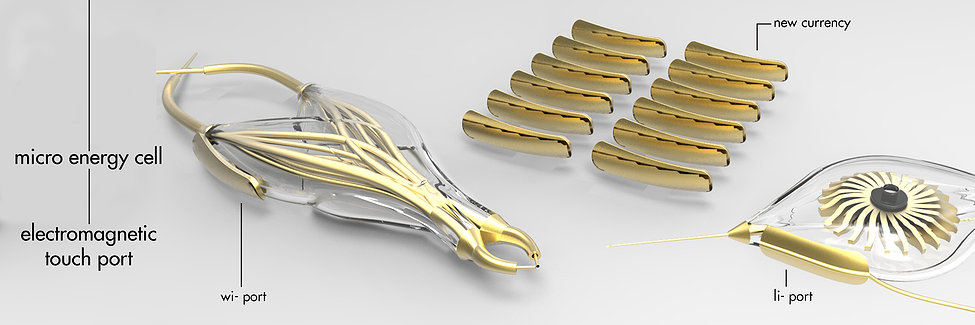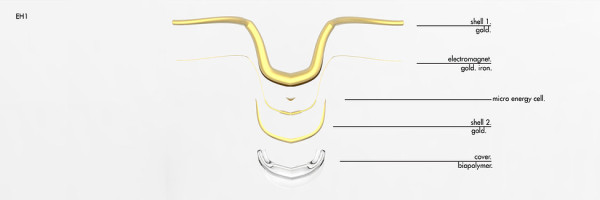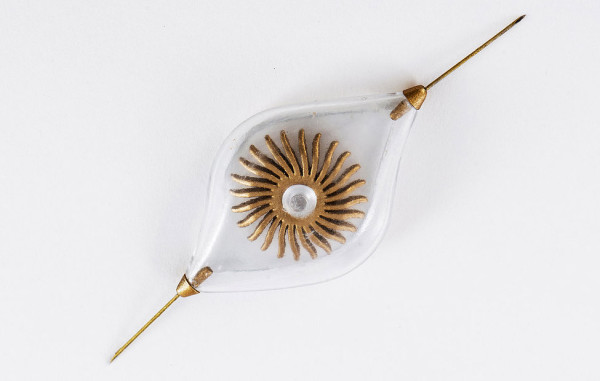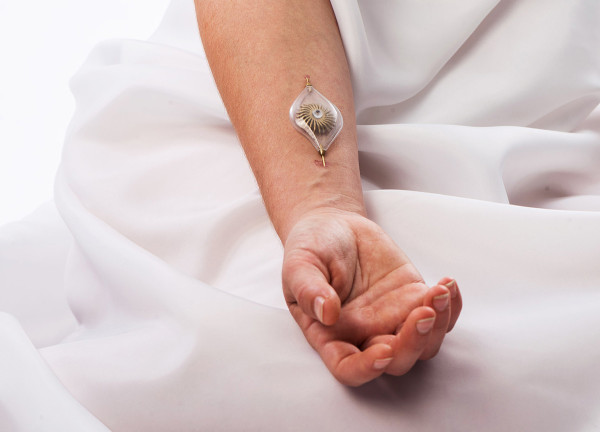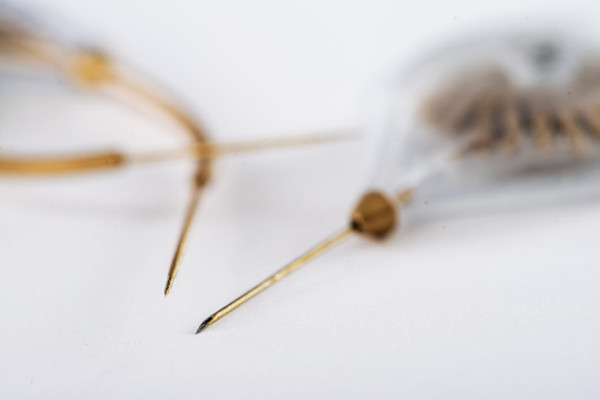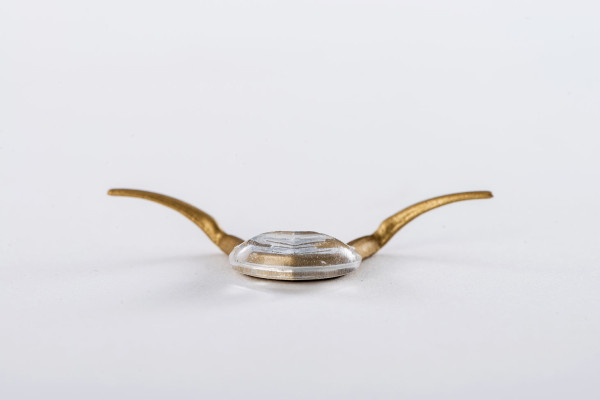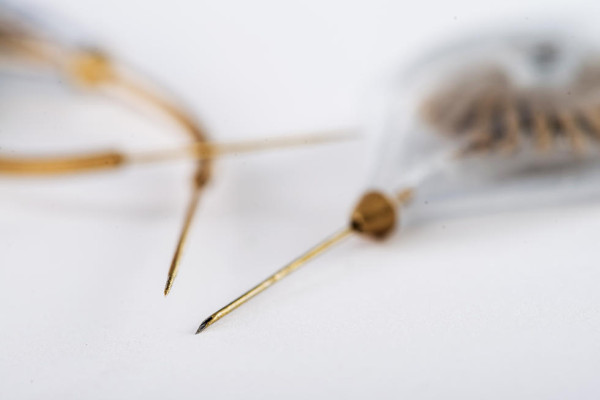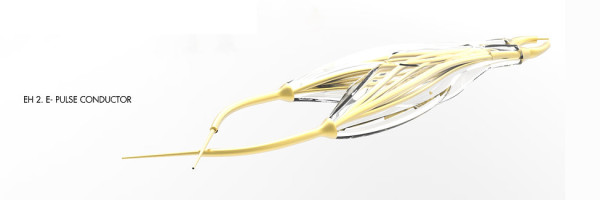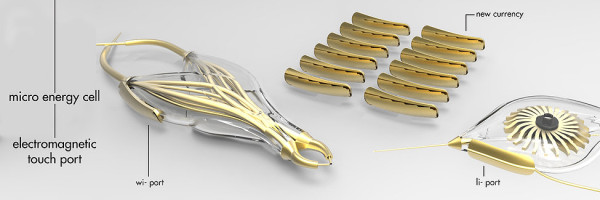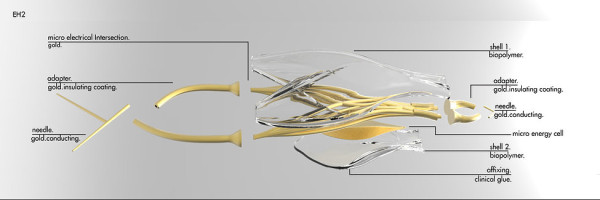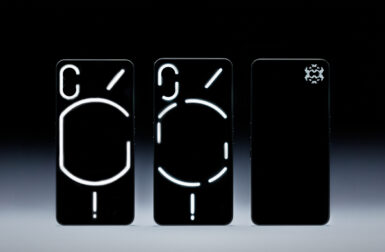In the dystopian future of The Matrix, humanity has been converted into a renewable crop by energy-starved sentient machines, with “farms” of human bodies harnessed and harvested for their metabolic output. It’s one of those disturbing sci-fi premises which can leave one suspicious of artificial intelligence, robotic vacuums, and the whole “internet of things” trend. But maybe Agent Smith and his robotic compatriots were onto something in regards to the human body as a renewable energy source.
Industrial design graduate student, Naomi Kizhner of Jerusalem’s Hadassah College envisions jewelry one day serving purposes beyond adornment, a three-piece collection connecting and converting the human body into one gigantic battery for biological data feedback.
Energy Addicts’ entomological-styled accessories hints of early David Cronenberg at his best/worst, the jewelry’s macabre beauty furthered by how each piece is worn: sharp pincers and stings pierce skin, establishing an “interface” between body and each bio-electrically powered accessory. Creepy. Cool.
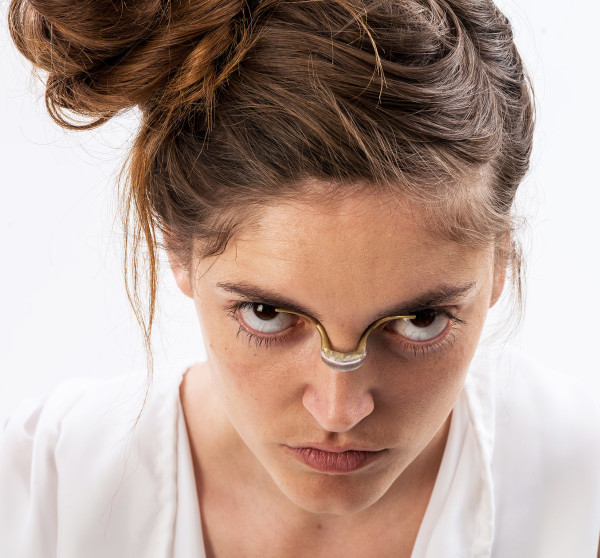
Blinker is worn like an eyeglass bridge. Inside, a tiny microcell stores energy collected with each blink of the eye.


